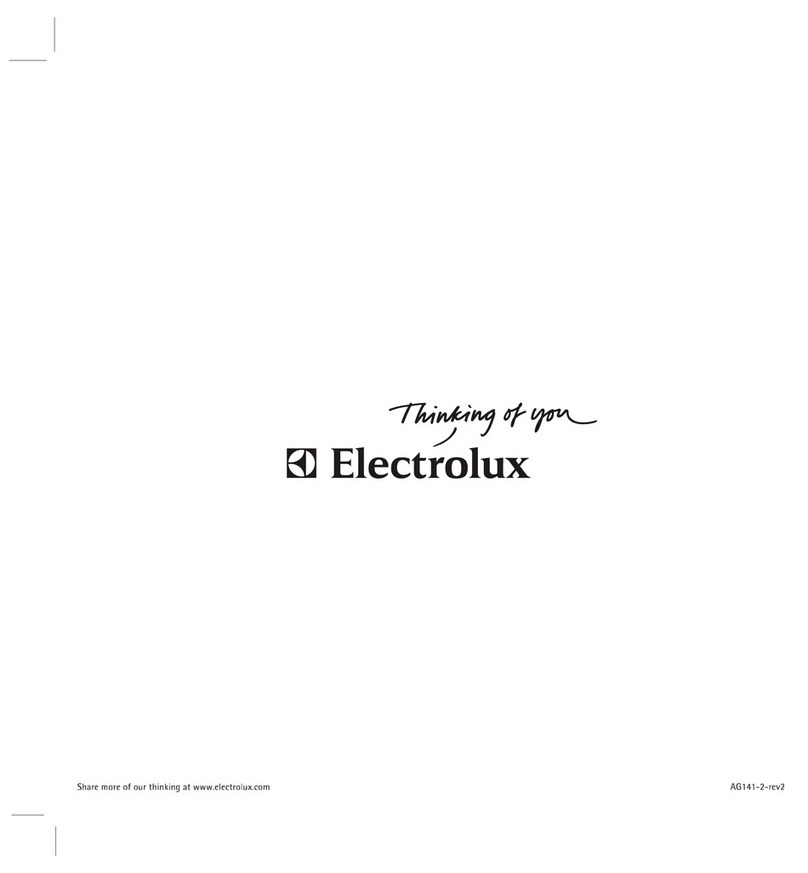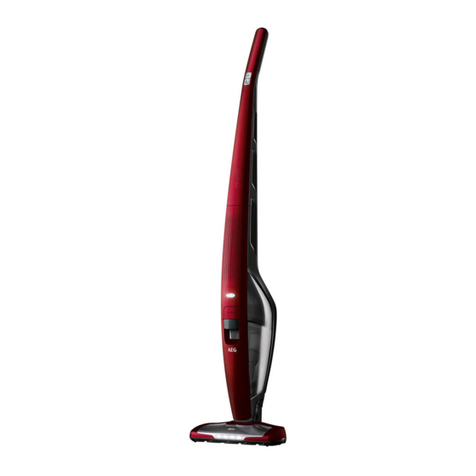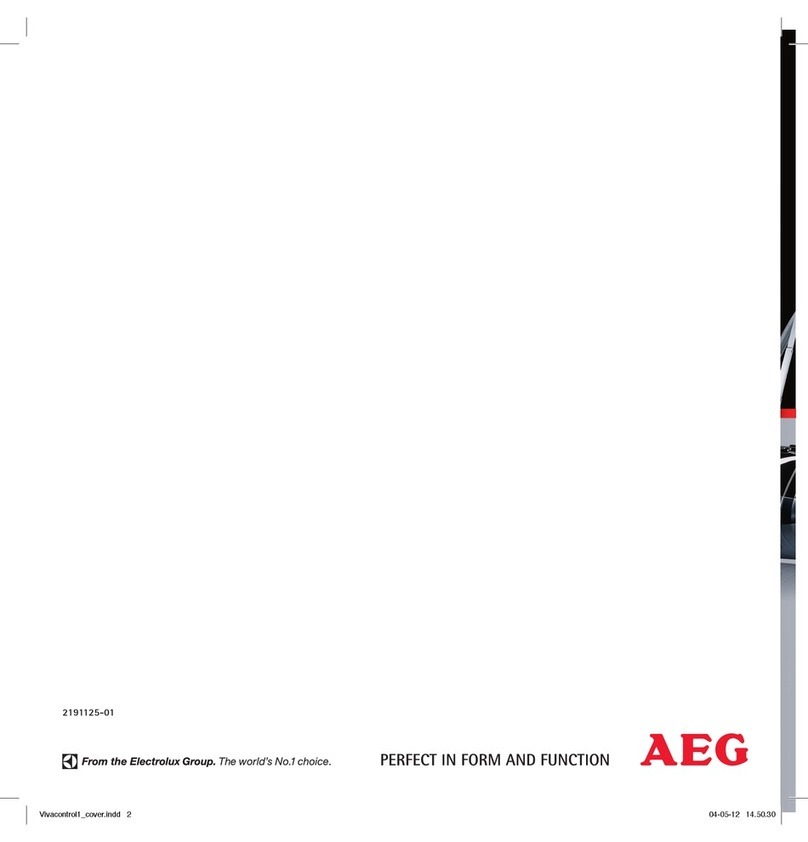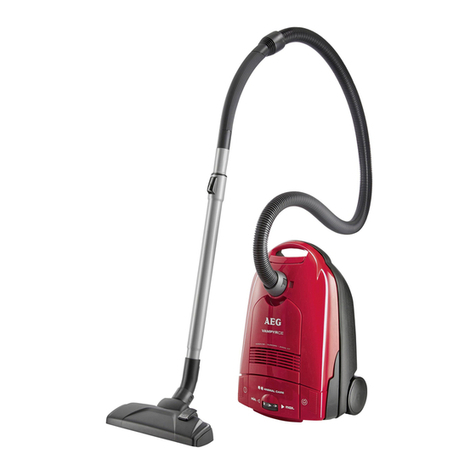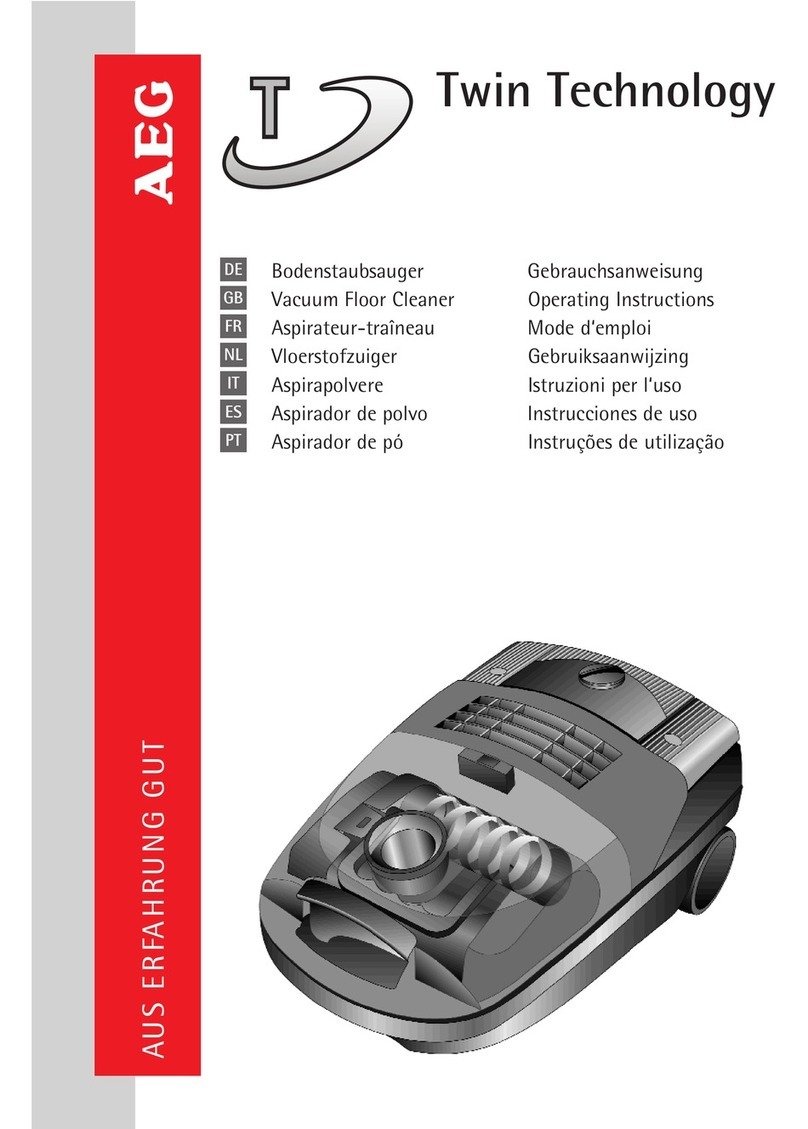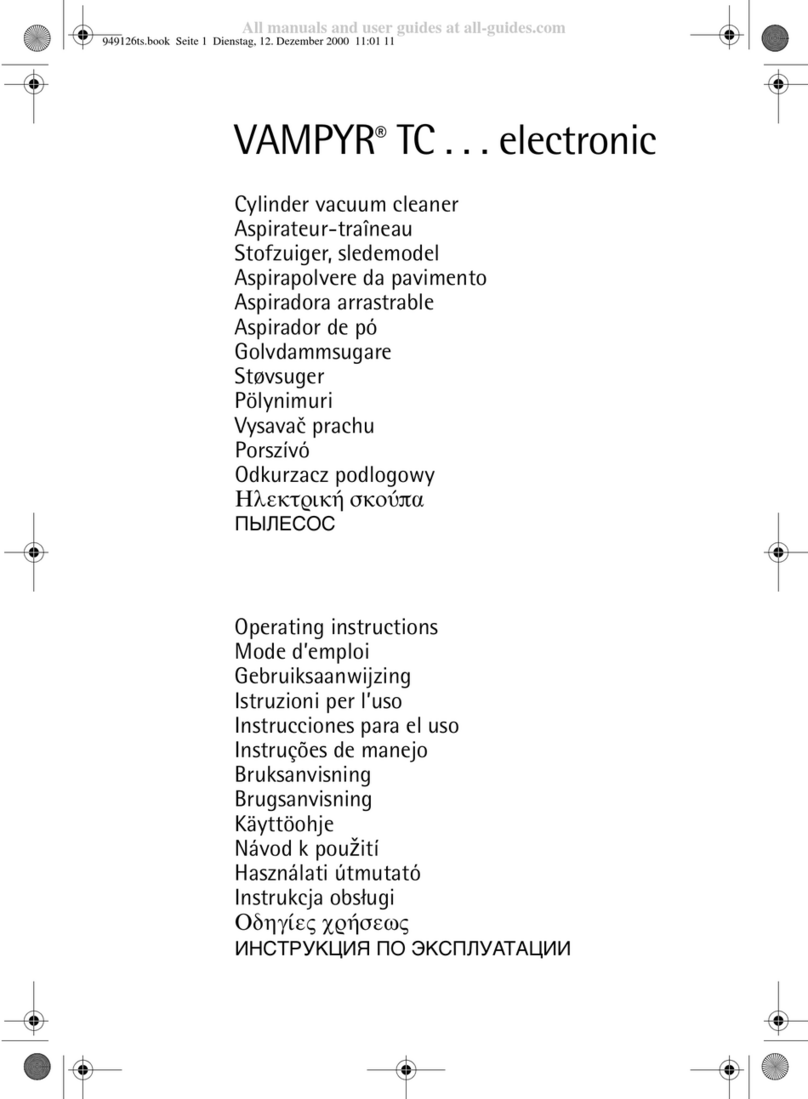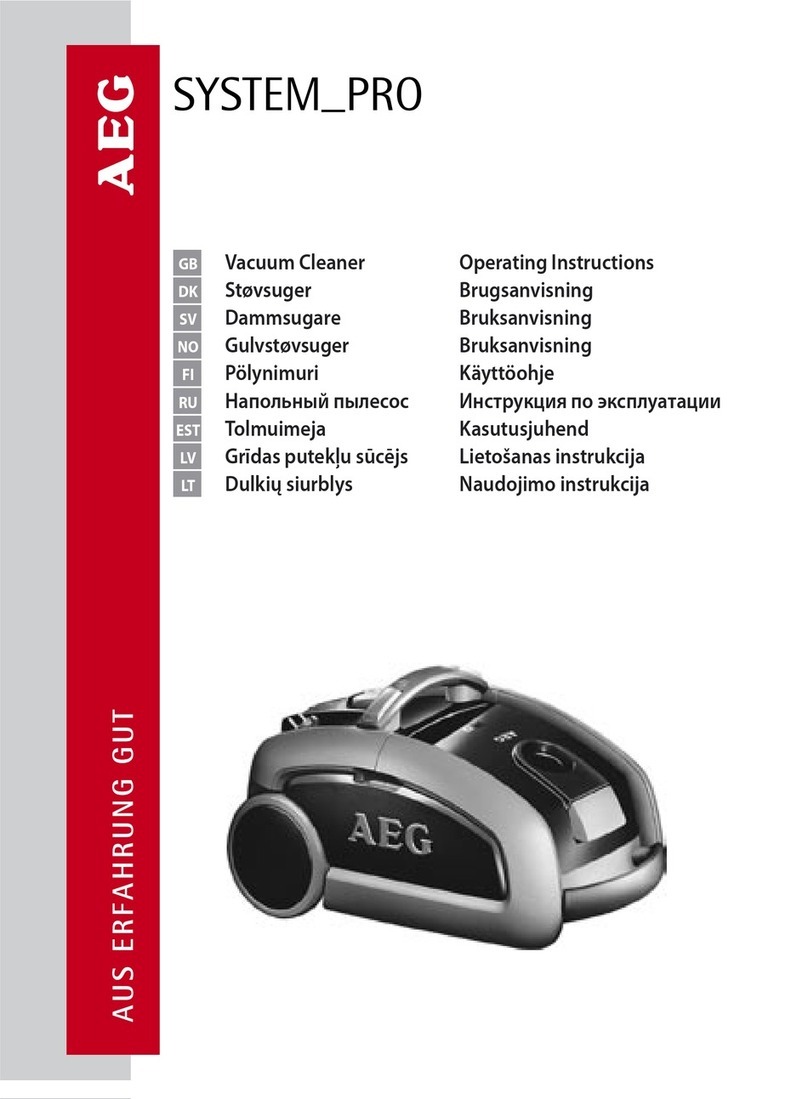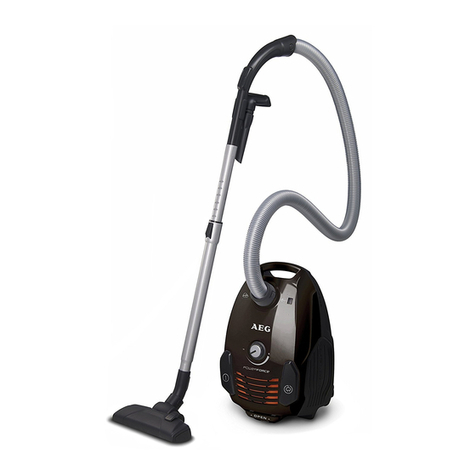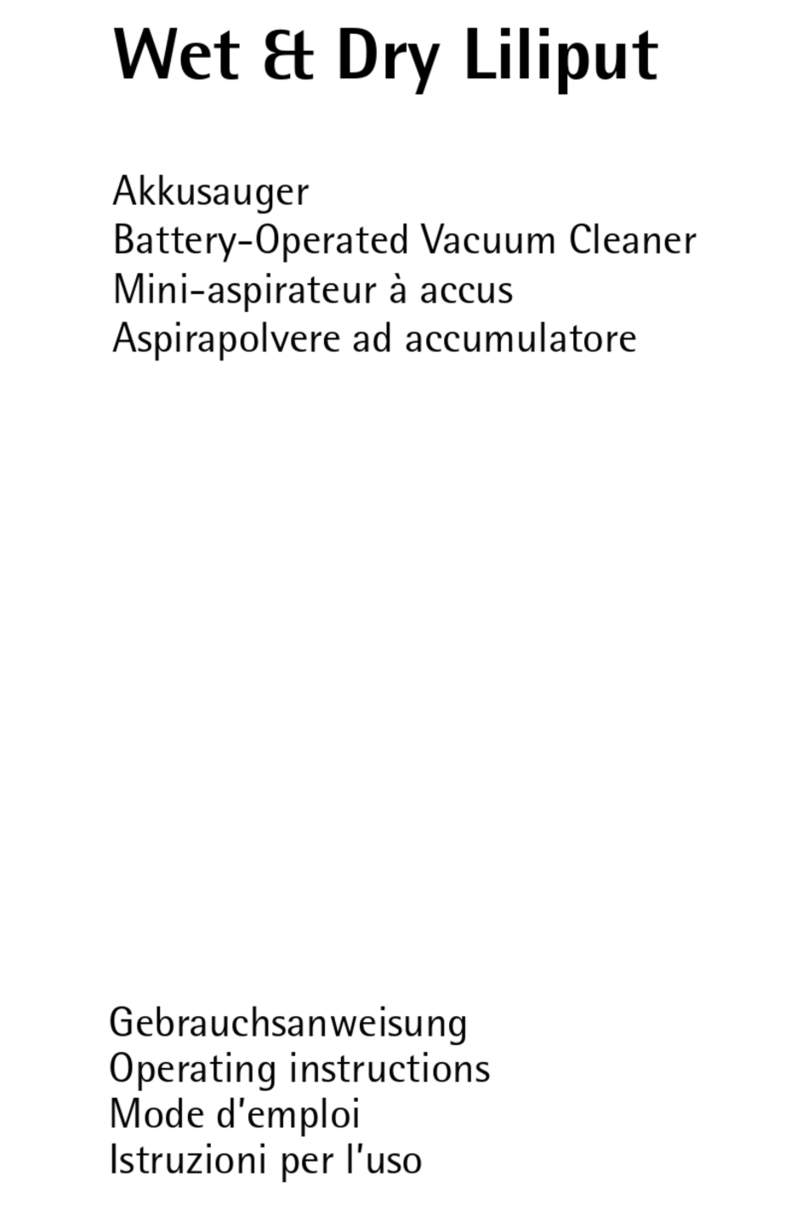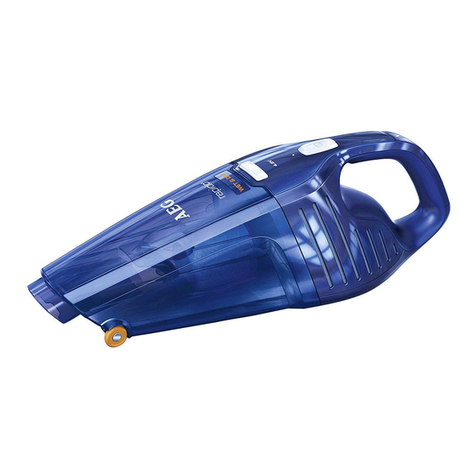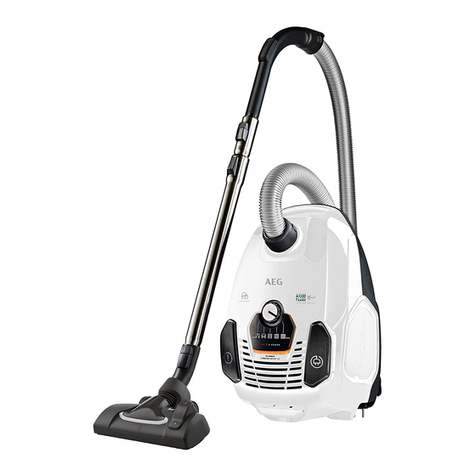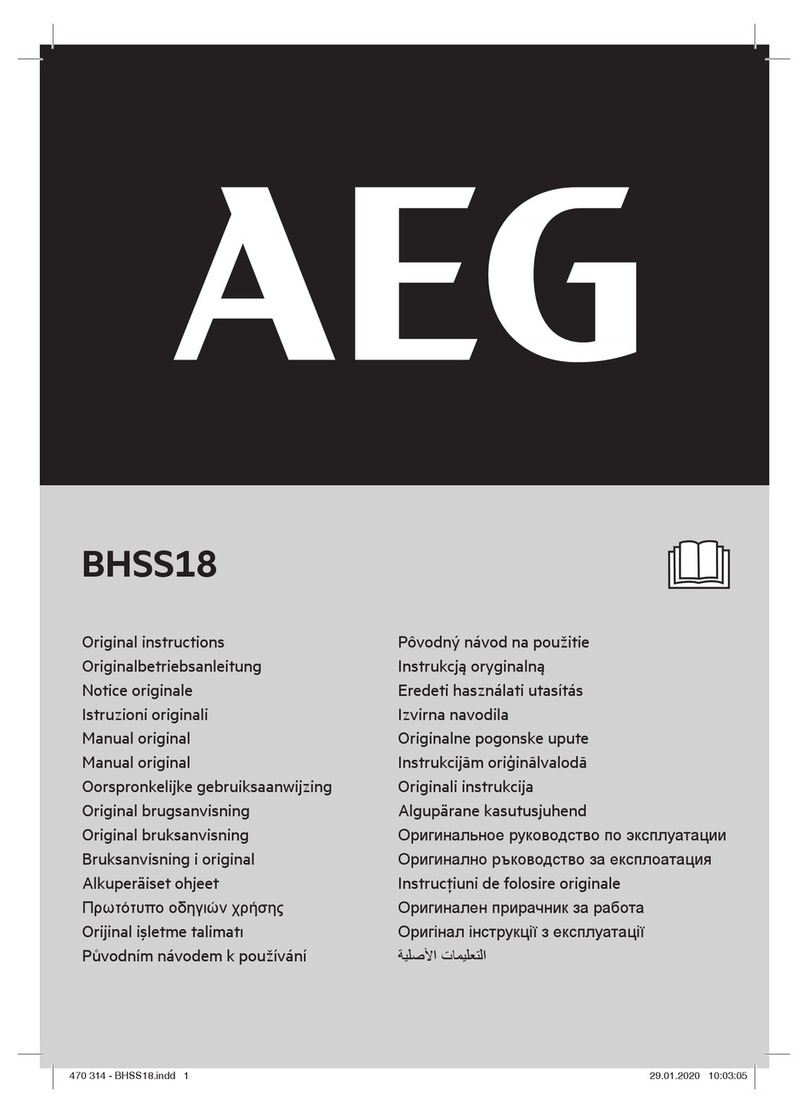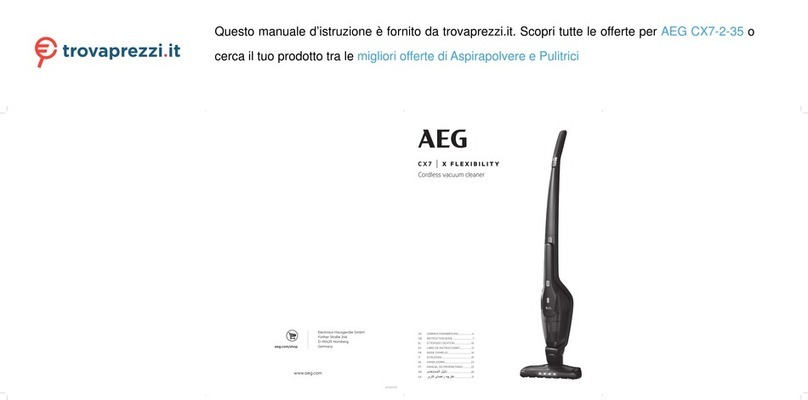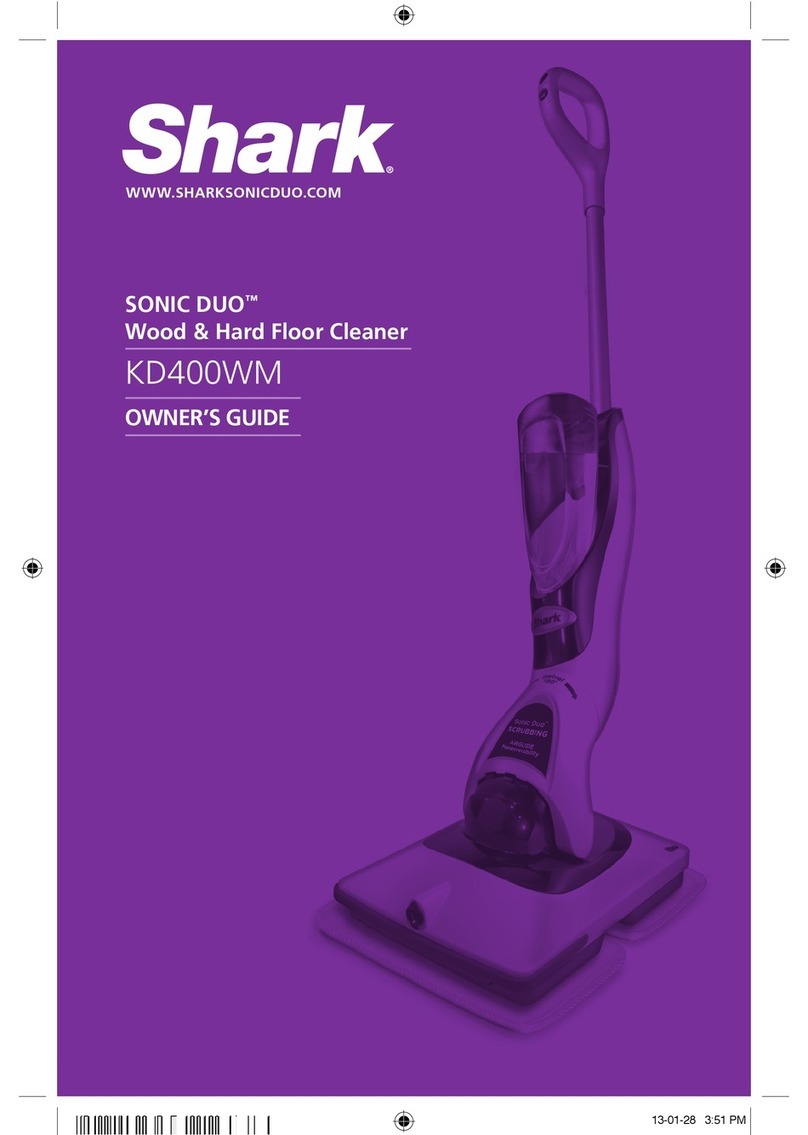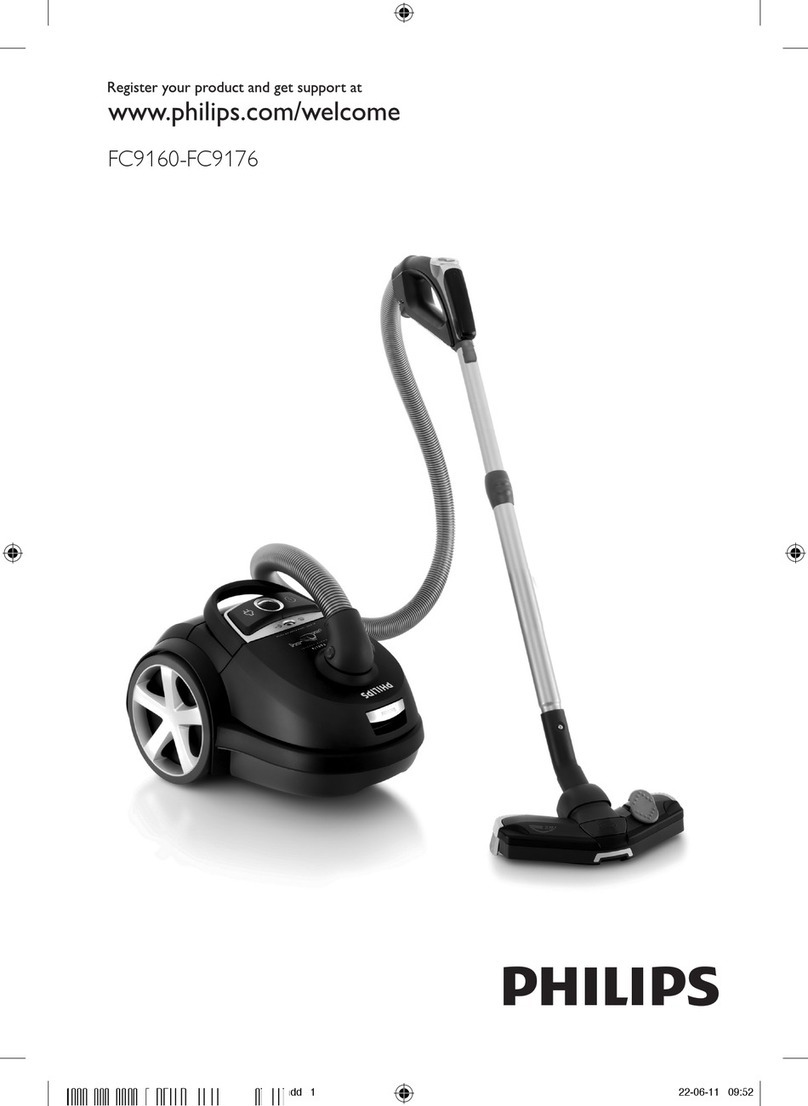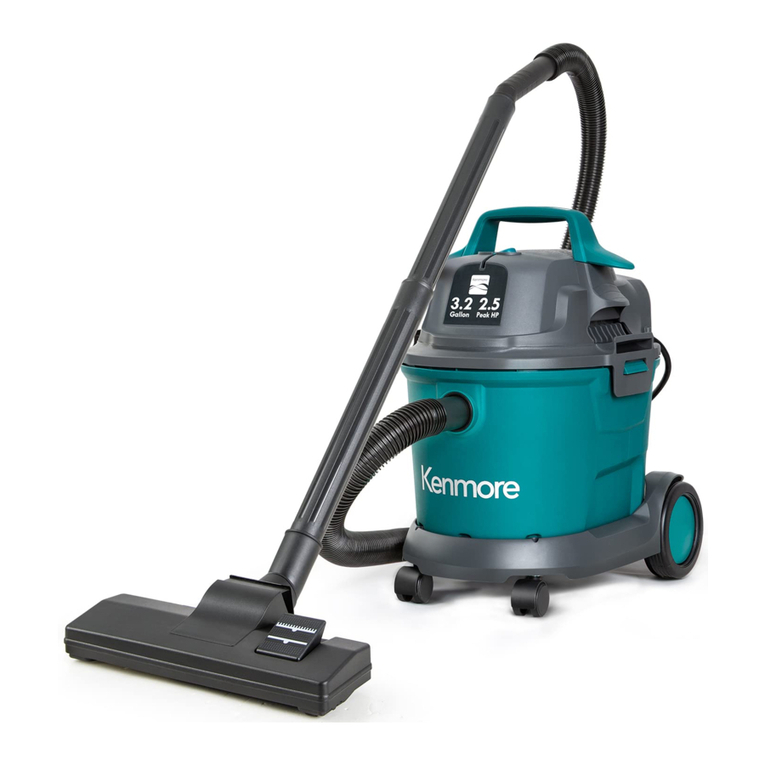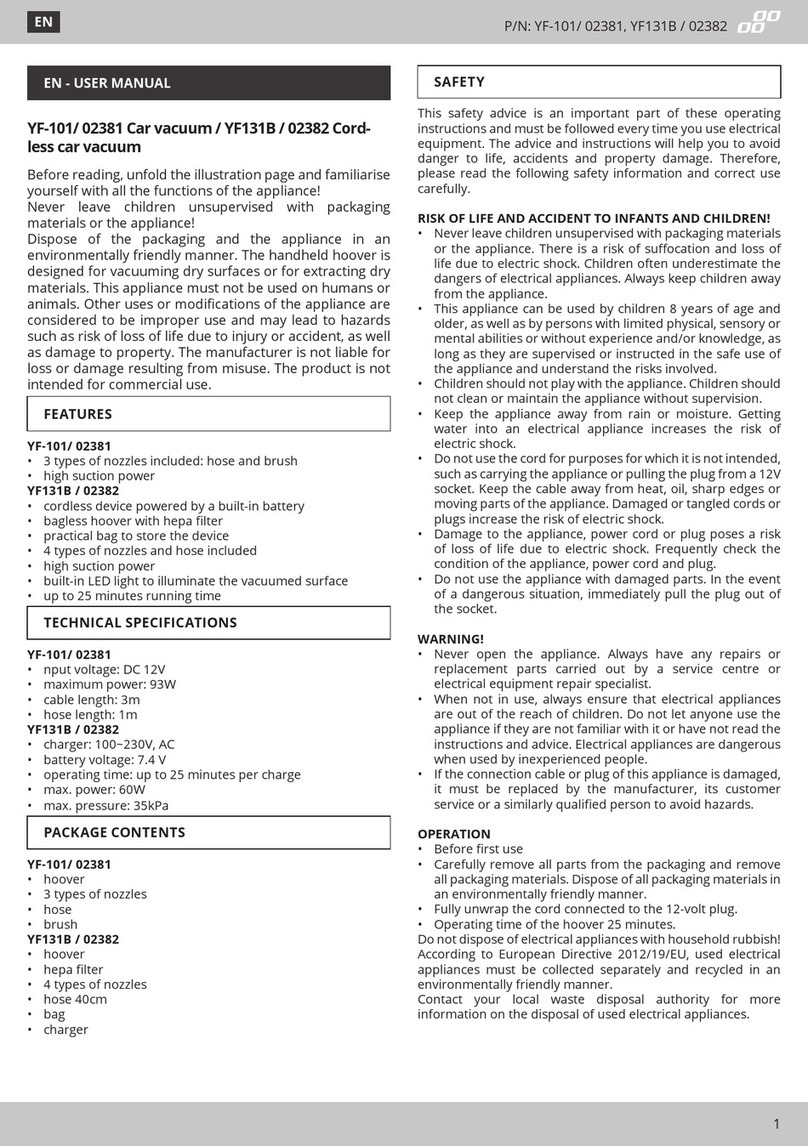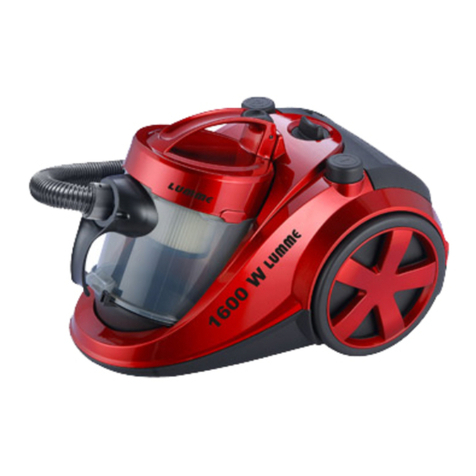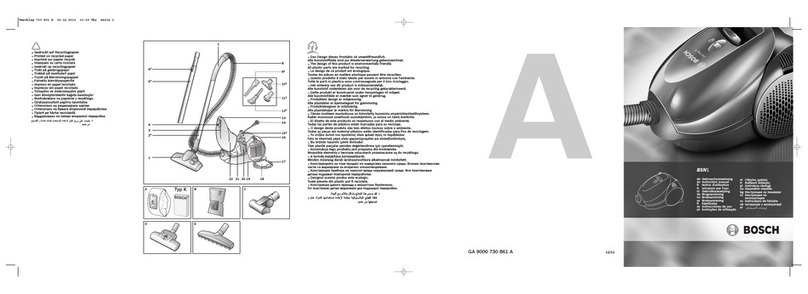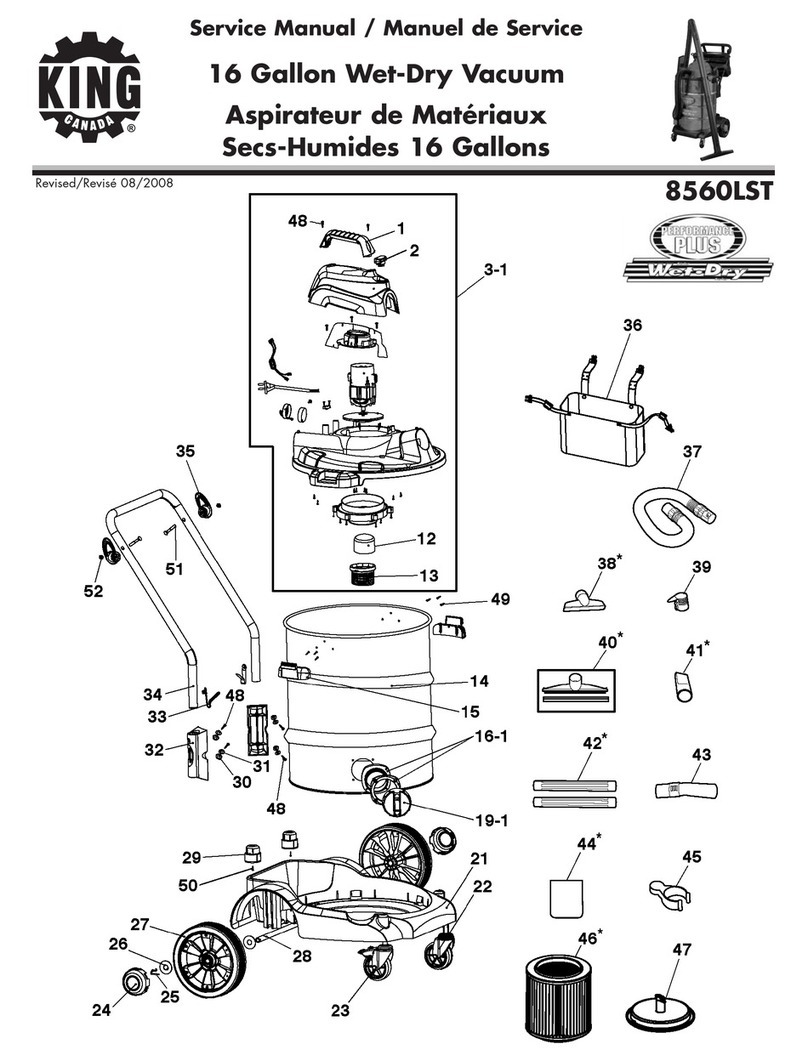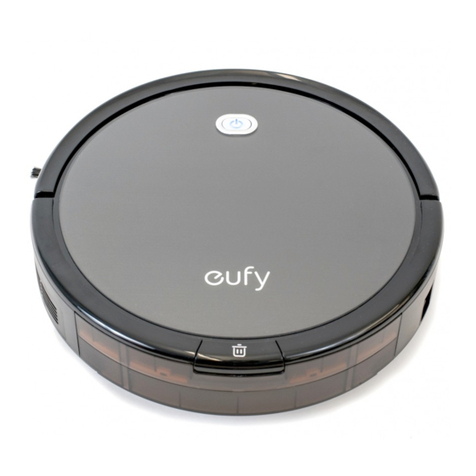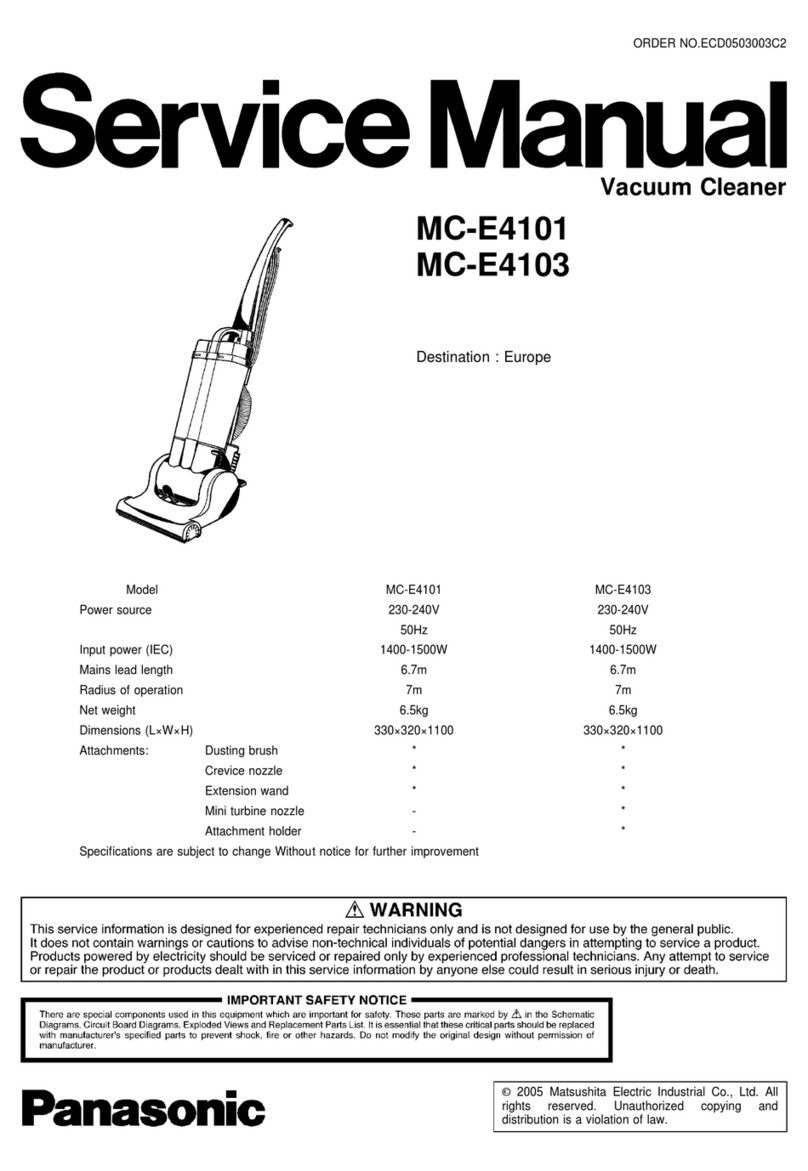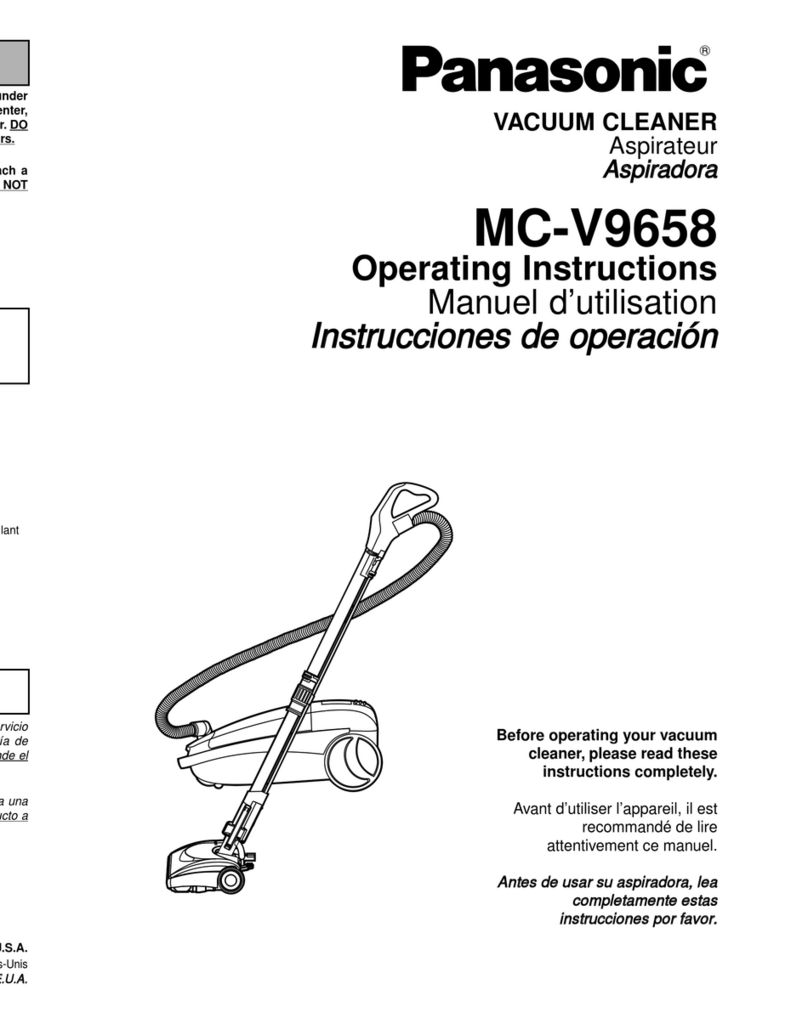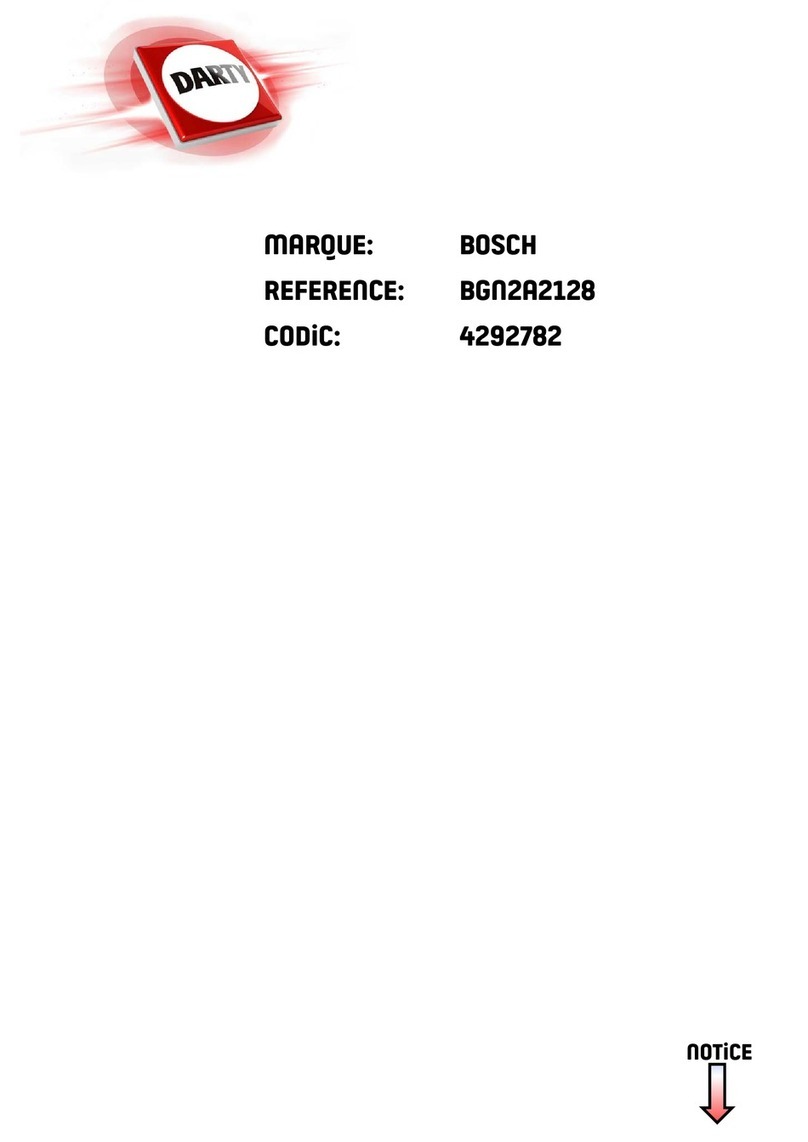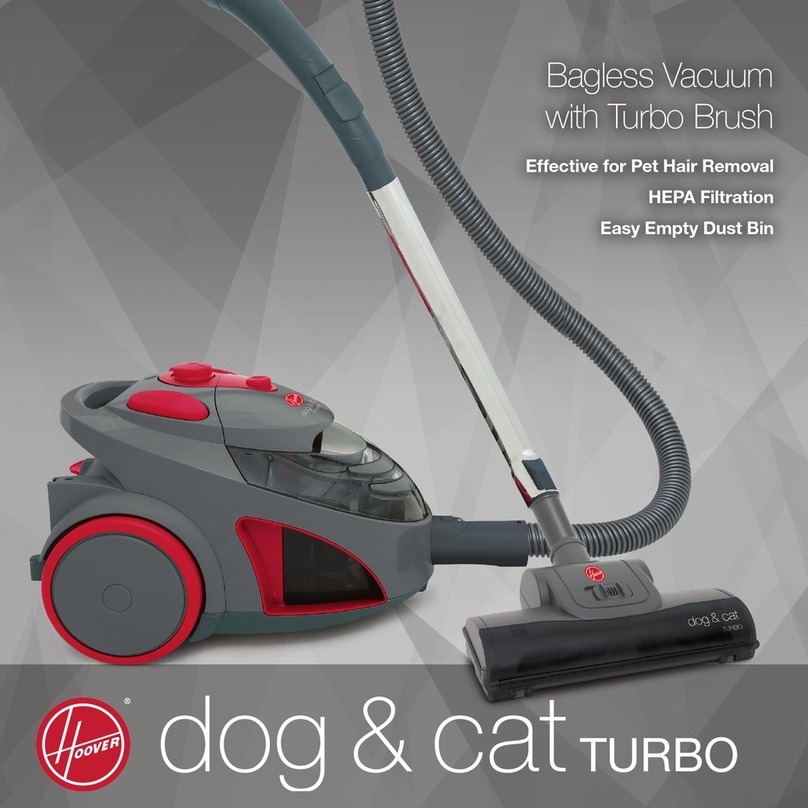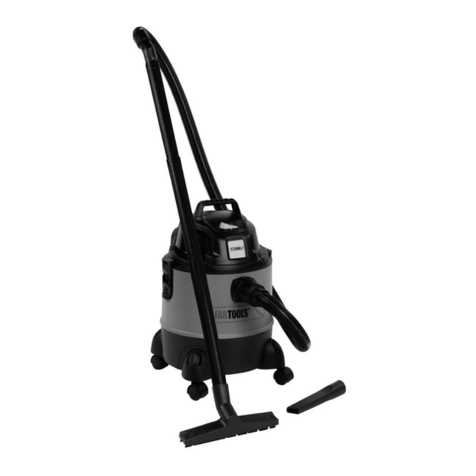
2. Never immerse the appliance in liquids and be aware of
sharp edges that may damage it. Never use the appliance
with wet or damp hands. Unplug it immediately if the
appliance becomes wet or damp when it is running. Don’t
immerse the appliance in water.
GENERAL SAFETY PRECAUTIONS FOR USING WORKSHOP VACUUM
1. This appliance is designed solely for use in the private
sector and for the designated purpose. The appliance is
not suitable for commercial use. Don’t use the appliance
outdoors (unless it has been specifically designed for
use outdoors). Don’t subject the appliance to heat, direct
sunshine or very high moisture (e.g., rain).
21. Children, disabled persons, and the aged are often not
aware of the dangers that can result from handling electric
appliances. The above mentioned persons and untrained
persons must never work with this electrical appliance.
22. When cleaning or removing the appliance, always switch it
off. Pull the plug out of the receptacle, if you are not going
to use the appliance for an extended period of time. Never
pull on the cable to unplug the appliance, rather pull on the
plug itself. Also, remove any special accessories from the
appliance.
23. Always keep the appliance clean. Don’t use any solvents or
cleaners that may damage or be harmful to the appliance
or user.
24. Never leave the appliance switched on unattended. If you
leave the work area, switch the appliance off or unplug it
from the receptacle (don’t pull the cord, but use the plug).
25. In order to protect children from electric household
appliances, make sure that the cable can’t cause children
to stumble and don’t give children access to the appliance.
26. Never use the appliance when you are under the influence
of medication, alcohol or drugs, if you are currently under
medical care, or if you are tired.
27. Check the appliance and the power cord regularly for any
possible damage. Don’t use damaged appliances.
28. Don’t try to repair the appliance yourself. Always use
an authorized technician for repairs. Always have faulty
power cords replaced immediately by the manufacturer
or a qualified service organization. Use the same type of
cable in order to prevent any danger of electric shock and
injury.
29. Only use original spare parts and accessories. Non
approved parts or third-party accessories may be a
possible source of danger and cause the guarantee to
become void.
30. Check the float often.
31. If you notice liquid leaking from your appliance, switch it off
immediately and unplug it.
32. Do not submerge the appliance in water. Make sure that
water is not spilled on the appliance.
33. When disposing of the wastewater, make sure that you
observe any legal regulations.
34. Only store the appliance in a safe and dry location outside
the reach of children.
35. Please also pay particular attention to the following
“Additional Safety Instructions For Workshop Vacuum”.
36. This appliance is not intended for use by persons
(including children) with reduced physical, sensory or
mental capabilities, or lack of experience and knowledge,
unless they have been given supervision or instruction
concerning use of the appliance by a person responsible
for their safety.
37. Children should be supervised to ensure that they do not
play with the appliance.
38. If the supply cord is damaged, it must be replaced by
the manufacturer, its service agent or similarly qualified
persons in order to avoid a hazard.
3. This wet/dry vacuum cleaner may only be used and kept in
a private home.
4. The appliance is designed to vacuum up materials that are
not hazardous to your health and that are not flammable.
5. Never hold the connectors in front of your face (especially
your eyes, ears, etc.). Never direct the nozzle towards
persons or animals.
6. Only use the appliance for its designated purpose. Any
other types of use are at your own risk and are possibly
dangerous.
7. Other uses and unattended operation are not allowed.
8. The manufacturer cannot be made responsible for
damages that are caused by improper use or incorrect
operation.
9. Wear protective clothing and gloves.
10. Connect the appliance only to a 240V ~ 50Hz alternating
current receptacle.
11. Make sure that the correct dust bag has been inserted
securely in its holder before using the appliance. The
wrong dust bag or incorrectly installed dust bags can
cause damage to the appliance and cause the guarantee
to become void.
12. If the power cord is damaged, it must be comepletely
replaced along with the cable protector by an authorised
service centre or other qualified service organisation.
13. Do not vacuum up ashes, hot coals and the like, large
fragments of glass and sharp objects.
14. Dont vacuum up any printer toner dust as it is electrically
conductive. In addition, it is possible that it will not be
completely filtered out by the filter system of the wet/dry
vacuum cleaner and can be released into the air via the
exhaust fan.
15. Never vacuum flammable or poisonous liquids like petrol,
oil, acids, or other volatile substances.
16. Don’t vacuum up liquids that are hotter than 60°C or any
poisonous or flammable dusts.
17. Never lay the appliance on its side. Pay particular attention
to a horizontal position and adequate stability on stairs.
18. Always unplug the appliance after use and before cleaning
or changing the filters or accessories.
19. Only trained specialists may make repairs on electric
equipment. Improper repairs could result in considerable
danger to the user.
20. Do not store the appliance directly beside a hot oven or
radiator.
3
